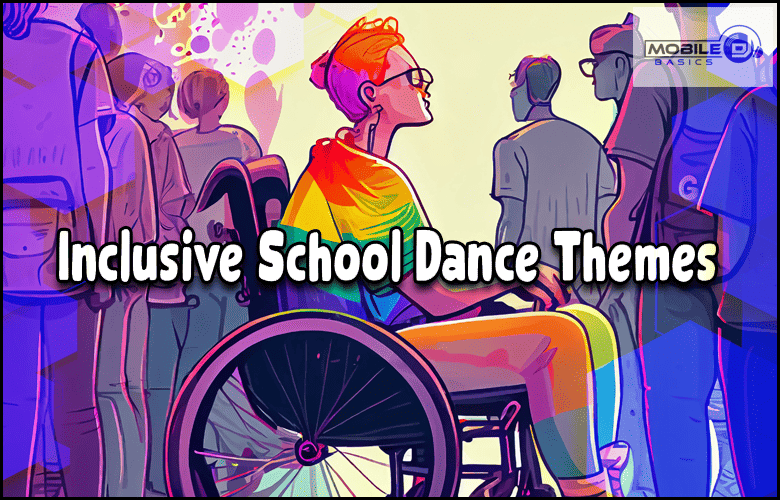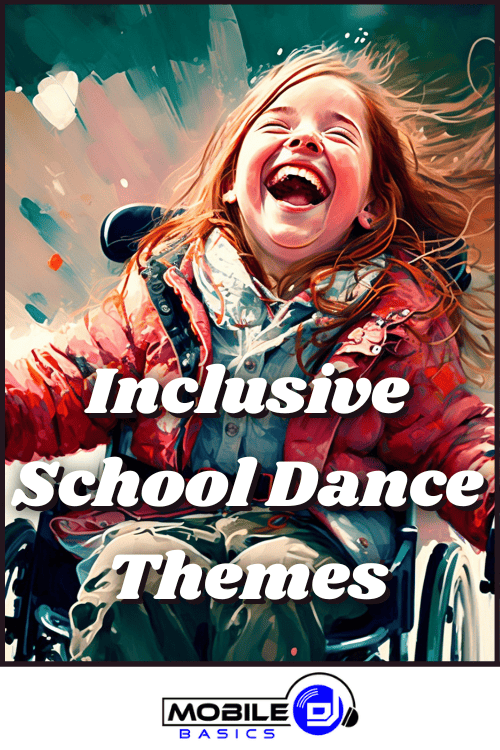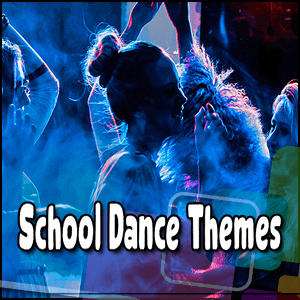
School events play a vital role in fostering a sense of community, and inclusivity is a crucial aspect of creating a supportive and accepting environment.
Inclusive school dance themes can promote diversity, acceptance, and participation among all students.
In this article, we will explore the benefits of inclusive school events, provide considerations for theme selection, offer exciting theme ideas, and discuss ways to engage all students in these events.
Benefits of Inclusive School Dance Themes
Inclusive school dance themes offer several benefits for students and the school community as a whole. By fostering a sense of belonging and acceptance, these themes create an inclusive atmosphere where students feel valued and appreciated.
Promoting Inclusion, Diversity, Equity, and Accessibility helps students develop a broader understanding of different traditions and perspectives.
Inclusive school dances also encourage participation from all students, regardless of their backgrounds or interests, allowing everyone to contribute and enjoy the festivities.
Choosing the Best Inclusive Theme for Your Event
When selecting diverse themes, there are several essential considerations to keep in mind. Cultural sensitivity and awareness are crucial to avoid misappropriation or misrepresentation of any particular culture.
Opting for gender-neutral and inclusive themes ensures that all students feel comfortable expressing themselves authentically.
It is also important to choose themes that accommodate various abilities and interests, ensuring that everyone can actively participate and engage in the event.
Inclusive School Dance Theme Ideas
Here are some inspiring inclusive theme ideas that can create an atmosphere of unity and celebration:
Theme Idea 1: “A World of Colors”
This theme celebrates the diversity of cultures around the globe. The concept revolves around vibrant colors, representing the rich tapestry of the world.
Decorate the venue with a spectrum of hues and incorporate elements from different cultures, encouraging students to dress in colorful attire.
Plan activities that celebrate cultural diversity, such as interactive booths where students can learn about different traditions, music, and dances from around the world.
Theme Idea 2: “Celebrating Diversity”
This theme highlights the importance of different cultures and traditions. The focus is on fostering cultural appreciation and understanding.
Decorate the venue with symbolic representations of various cultures, and encourage students to dress in attire that represents their heritage.
Incorporate multicultural music and offer opportunities for students to showcase performances, such as traditional dances or musical presentations.
Organize food stations featuring dishes from different cultures, allowing students to experience the richness of diversity through their taste buds.
Theme Idea 3: “Together We Shine”
This theme emphasizes the collective talents and strengths of students. Decorate the venue with sparkling elements, creating an atmosphere that symbolizes unity and collaboration.
Incorporate interactive activities that showcase the diverse skills and abilities of students.
Plan talent showcases, group performances, or collaborative art projects that allow students to shine collectively.
Highlight teamwork and cooperation, and encourage students to recognize and appreciate the unique contributions of their peers.
Engaging All Students in School Dances
To ensure that all students feel included and valued, it is important to provide accessible accommodations for students with disabilities.
This may include ensuring wheelchair accessibility, providing sensory-friendly spaces, or offering sign language interpreters.
Additionally, encourage student input and involvement in the planning process. Create opportunities for student-led committees or clubs to contribute ideas and actively participate in organizing the dance.
Organize inclusive activities and games that promote interaction and engagement among diverse groups of students, fostering an inclusive and welcoming atmosphere.
Promoting Inclusivity Beyond the Dance Floor
Inclusivity should extend beyond the dance floor. Consider extending the inclusivity message to pre-dance events by collaborating with student clubs and organizations.
Host workshops, presentations, or cultural showcases that highlight the importance of inclusivity and acceptance. Involve the wider school community by inviting parents, teachers, and alumni to participate in inclusive initiatives.
By engaging the broader community, you can amplify the message of acceptance and create a culture of inclusivity throughout the Middle School and High School.
Who decides which themes are and are not inclusive?
The decision regarding which themes are inclusive and which are not is typically made collaboratively by the organizers, school administration, student representatives, and relevant stakeholders involved in planning the high school dances or events.
These decision-makers consider various factors such as the theme’s potential to celebrate diversity, accommodate different abilities and interests, and create a welcoming environment for all attendees.
When searching for unique dance themes for high school dances, a homecoming dance, or a casual dance, it is important to consider themes that promote inclusivity and resonate with a diverse student body.
Ideas such as a masquerade ball, winter wonderland, or disco fever can be inclusive if implemented in a way that encourages participation from all students.
Themes featuring bright colors or elements that evoke the best memories, family, friends, equality, happiness, peace, and togetherness often contribute to an inclusive atmosphere.
Effective communication and collaboration among the dance planning committee, students, and teachers can help ensure that ideas reflect the values of inclusion and promote a sense of community.
It’s essential to consider the age range and diverse backgrounds of the students attending, whether they are in elementary school, middle school, or high school.
Events like spirit week, Hawaiian luau, or Disney-themed dances can be inclusive when organized with sensitivity to cultural diversity and ensuring that all students feel welcome and represented.
Inclusive dance education activities within the school’s curriculum can contribute to an inclusive dance class and overall education environment.
Incorporating diverse dance styles, inclusive teaching strategies, and creating opportunities for all dancers to participate can foster an inclusive atmosphere in the dance studio or classroom.
When planning decorations and activities, it’s crucial to consider the diverse needs and abilities of the dancers. The goal is to provide an inclusive experience that allows everyone to participate and feel included.
Inclusion ideas for dance education and events involve considering the unique abilities and backgrounds of all students.
By embracing inclusive education practices, promoting diversity, and ensuring that all students have equal opportunities to participate and thrive, schools can create an inclusive dance class, inclusive school dances, and inclusive school environments.
FAQ:
Q1: What is an inclusive school dance theme?
A1: An inclusive school dance theme is a concept or idea that promotes diversity, acceptance, and participation among all students. It aims to create an inclusive and welcoming atmosphere where students of different backgrounds, abilities, and interests feel valued and included.
Q2: Why are inclusive school dance themes important?
A2: Inclusive school dance themes are important because they foster a sense of belonging, promote cultural appreciation, and encourage unity among students. These themes create an environment where students can express themselves authentically, celebrate diversity, and actively participate in school events.
Q3: How do inclusive themes benefit students?
A3: Inclusive themes benefit students by providing them with a sense of acceptance and belonging. They promote cultural understanding, broaden perspectives, and allow students to learn from different traditions and experiences. These themes also encourage participation from all students, ensuring that everyone can contribute and enjoy the dance.
Q4: How can I choose an inclusive theme?
A4: When choosing a theme, consider themes that are culturally sensitive and promote inclusivity. Opt for gender-neutral themes that allow all students to express themselves comfortably. Additionally, select themes that accommodate various abilities and interests to ensure that everyone can actively participate.
Q5: How can I engage all students in a school dance?
A5: To engage all students, provide accessible accommodations for students with disabilities, such as wheelchair accessibility and sensory-friendly spaces. Encourage student input and involvement in the planning process to create a sense of ownership and representation. Organize inclusive activities and games that promote interaction and collaboration among diverse groups of students.
Q6: How can I promote inclusivity beyond the dance floor?
A6: To promote inclusivity beyond the dance floor, consider extending the inclusivity message to pre-dance events. Collaborate with student clubs and organizations to organize workshops, presentations, or cultural showcases that highlight the importance of inclusivity. Involve the wider school community by inviting parents, teachers, and alumni to participate in inclusive initiatives and support the message of acceptance and diversity.
Q7: What role does cultural sensitivity play in choosing inclusive themes?
A7: Cultural sensitivity is crucial when choosing inclusive themes to avoid misappropriation or misrepresentation of any particular culture. It is important to respect and appreciate the diversity of cultures and traditions, ensuring that themes are respectful, inclusive, and provide opportunities for students to learn about and celebrate different heritages.
Q8: How can I ensure that all students feel included and valued during an inclusive dance?
A8: Providing accessible accommodations for students with disabilities is essential to ensure inclusivity. Additionally, actively seek student input and involvement in the planning process to create a sense of ownership and representation. By organizing inclusive activities and games that promote interaction and engagement among diverse groups of students, you can foster an inclusive and welcoming atmosphere for all.
Remember, inclusivity is an ongoing commitment. It is important to continuously assess and improve your efforts to create a welcoming environment for all students throughout the school year.
Conclusion
Inclusive school dance themes are powerful tools for fostering unity, celebrating diversity, and promoting inclusivity in school events.
By carefully selecting themes, engaging all students, and extending the message beyond the dance floor, schools can create an environment where every student feels valued and accepted.
Let us embrace the richness of diversity and continue to prioritize inclusivity in all our events, creating a space that celebrates each student’s unique contributions and fosters a sense of unity and celebration.
Which other themes resonate with you?
Author Note: In the interest of inclusivity and respect, it is crucial to acknowledge that language and terminology evolve over time.
If any terms or language used in this article are outdated or no longer acceptable, we sincerely apologize.
We strive to foster an inclusive environment and encourage feedback to ensure our content aligns with current understanding and respectful terminology.
Language plays a significant role in promoting inclusivity, and we are committed to continuous improvement and learning in this regard.










